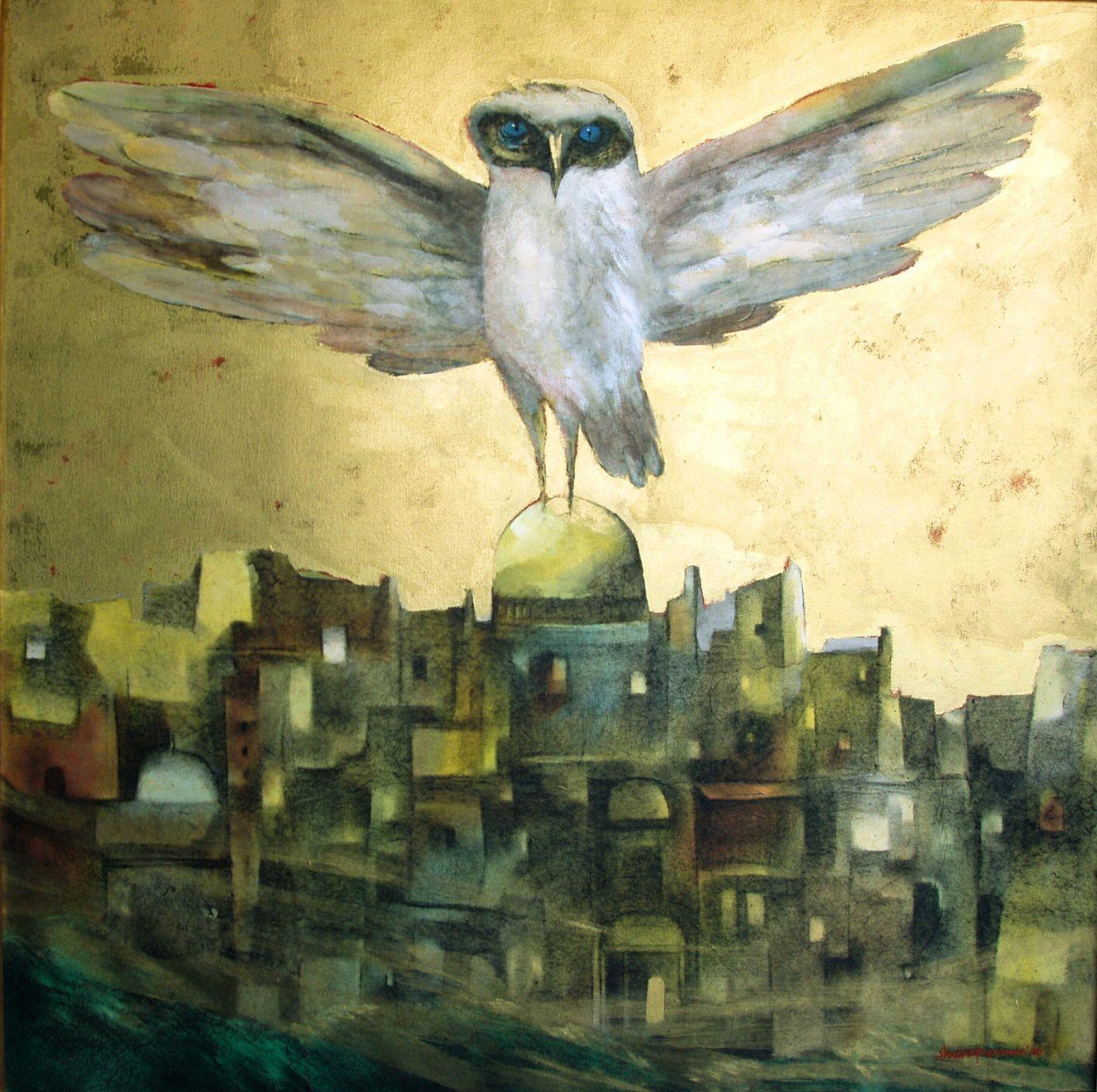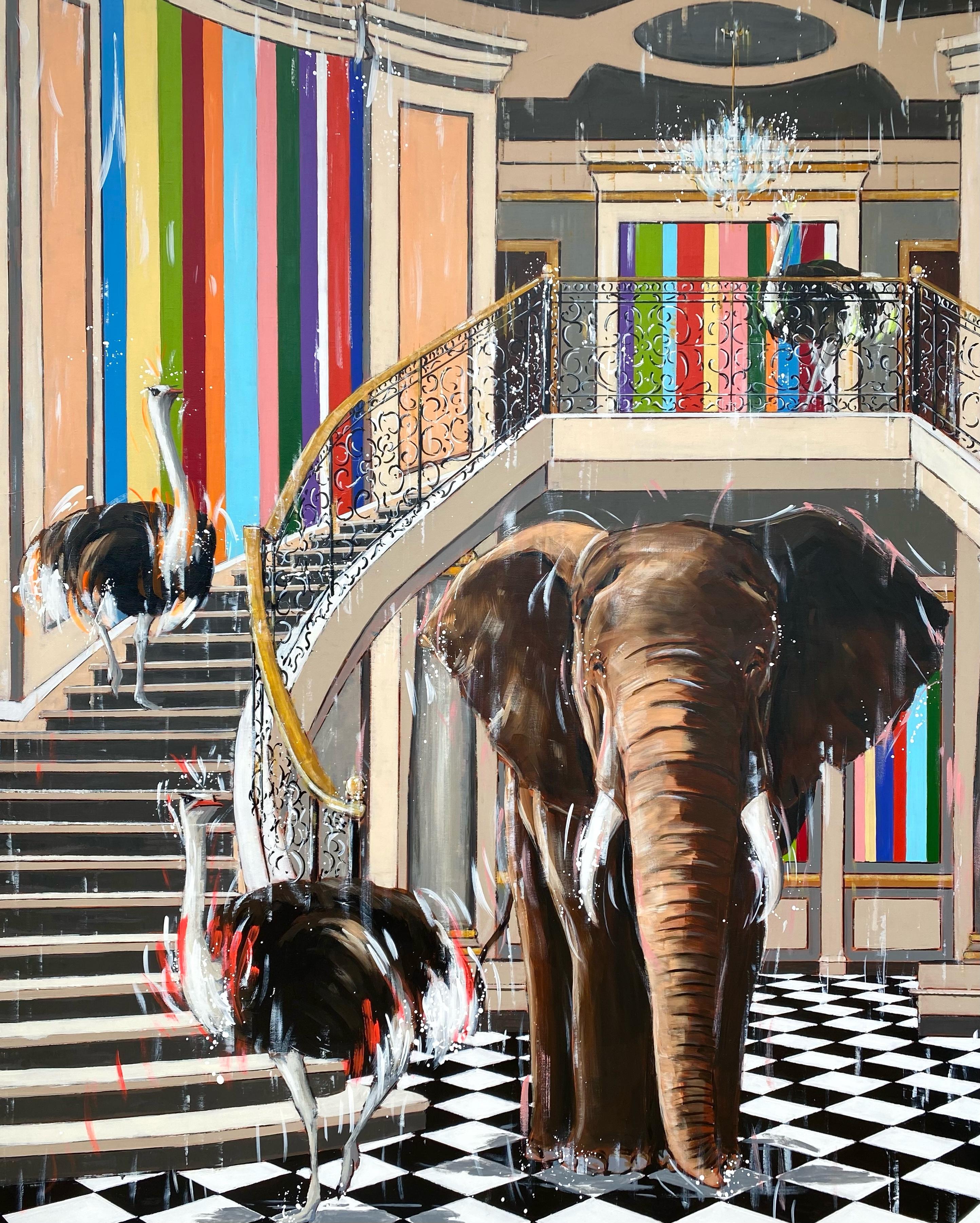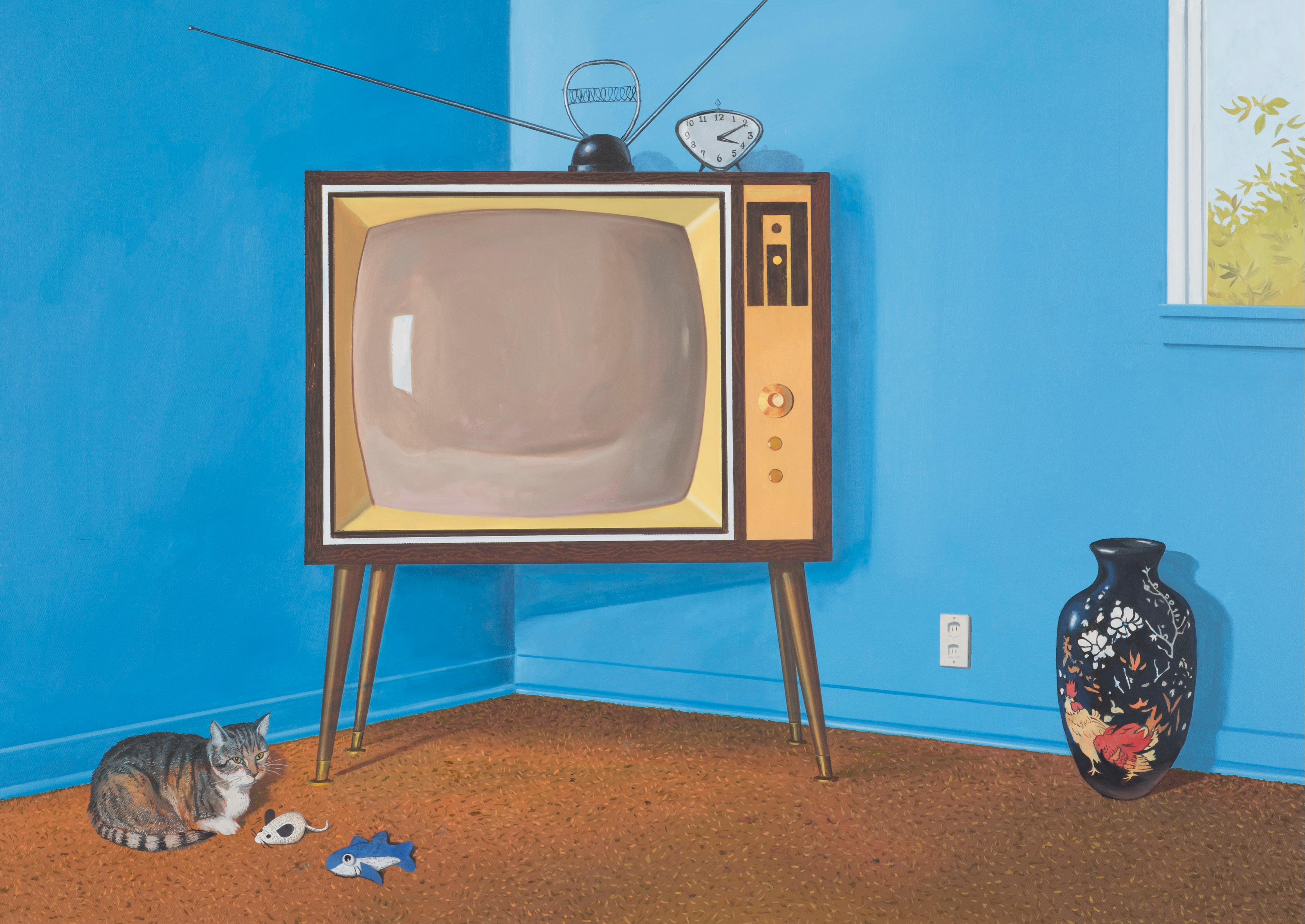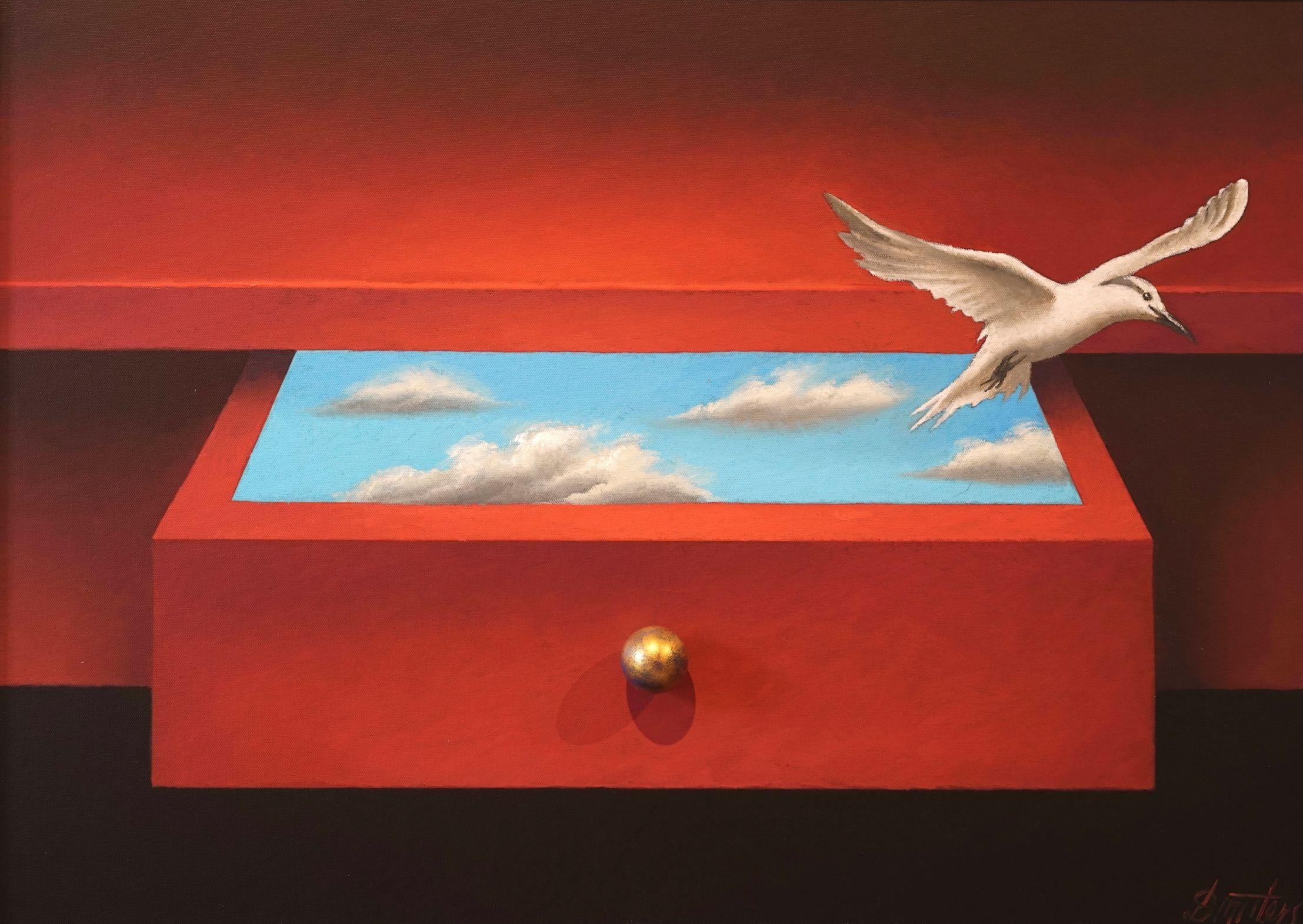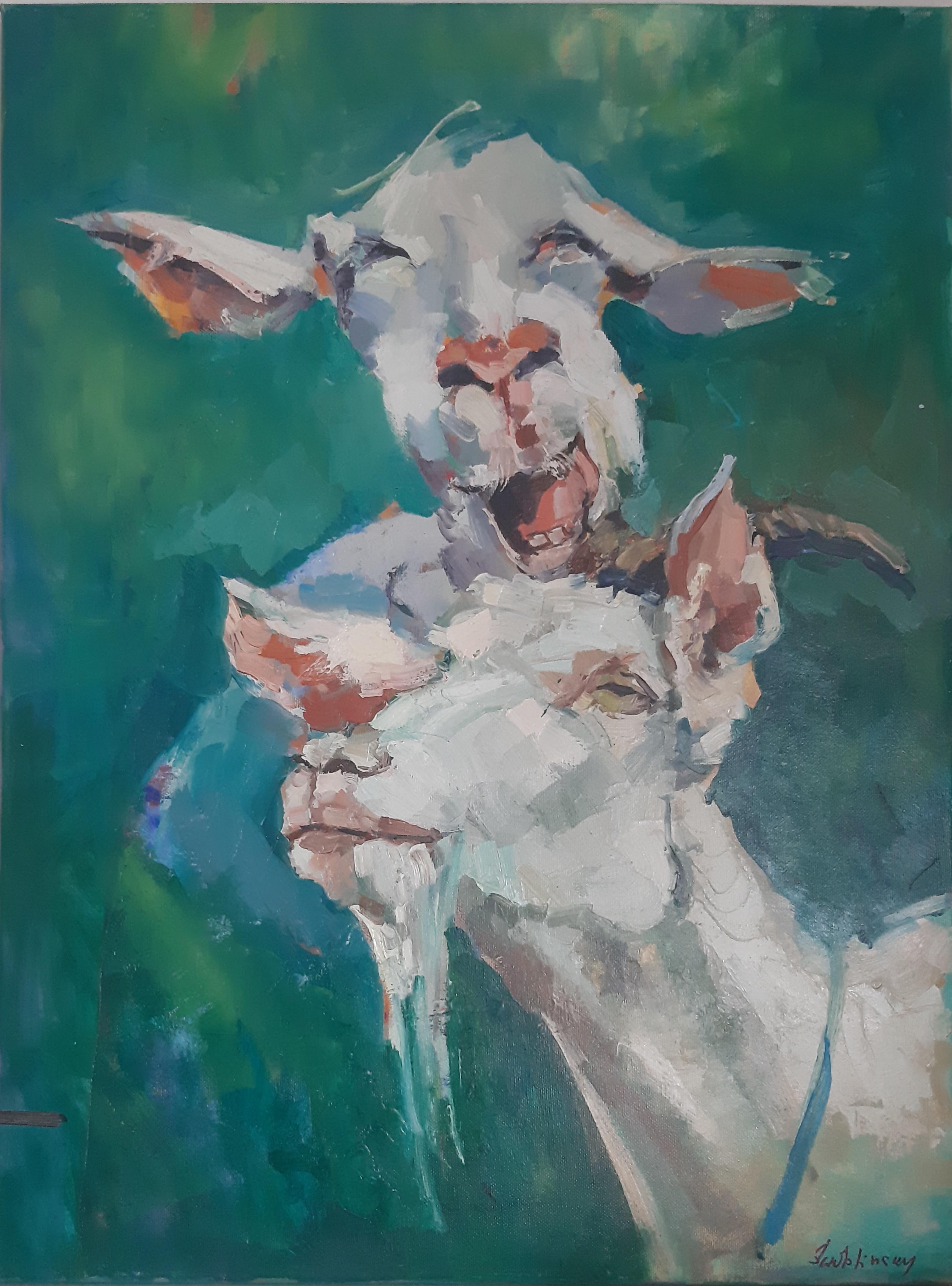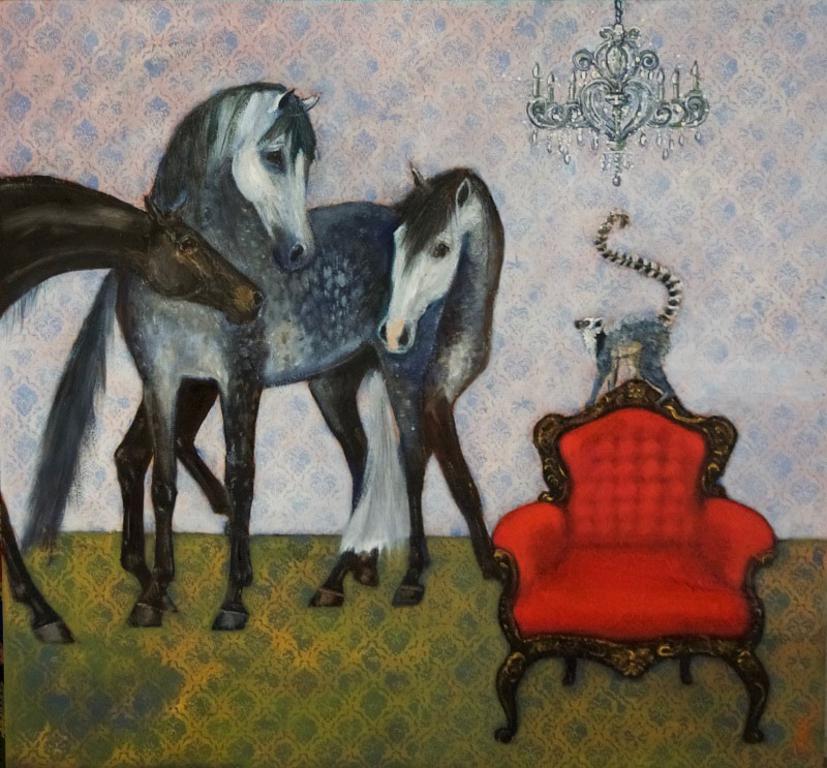Items Similar to "Interior of a Stable" William Hart, Hudson River School Antique, Boy and Horse
Want more images or videos?
Request additional images or videos from the seller
1 of 12
William Hart"Interior of a Stable" William Hart, Hudson River School Antique, Boy and Horse
About the Item
William M. Hart (1823 - 1894)
Interior of a Stable
Oil on canvas
17 x 12 inches
Provenance
William Macbeth Gallery, New York
Mrs. Mabel Brady Garvan Collection
Christie's New York, Sporting Art, November 28, 1995, Lot 116
Ann Carter Stonesifer, Maryland
Estate of above
Brunk Auctions, Asheville, North Carolina, January 27 2018, Lot 777
Exhibited
New York, The Metropolitan Museum of Art, Life in America, April 24 - October 29, 1939, no. 123, illustrated.
New York, Macbeth Gallery, 1892: Sixtieth Anniversary Exhibition, April 1952, p. 5, no. 18.
Literature
Turner Reuter Jr, Animal and Sporting Artists in America, Middleburg, Virginia, 2008, p. 306.
Gary Stiles, William Hart: Catalogue Raisonné and Artistic Biography, no. 1126, illustrated.
It should be noted that the Francis Patrick Garvan and Mrs. Mabel Brady Garvan collection, of which this painting was a part of, was one of the foremost American Art collections and now makes up a large part of the Smithsonian American Art Museum and the Yale University Art Gallery collections.
Born in 1823 in Paisley, Scotland, William Hart emigrated with his parents to the United States at the age of nine and settled in Albany, New York. It was here that Hart first began his artistic training when he was placed under the tutelage of Messrs, Eaton & Gilbert, the prestigious coach-makers from Troy, New York. During this time, Hart learned how to decorate coach panels, covering them with either landscapes or figurative compositions. At the age of seventeen, he was eagerly contemplating an artist’s profession. Consequently, he left the mechanical trade of coach-making and began expanding his artistic pursuits to more refined endeavors.
Hart followed coach-making with decorating window shades and later developed an interest in portraiture. Around 1840, he established his first formal studio in his father’s woodshed in Troy. There, he created many likenesses of individuals, affording him a nominal income. Once, he remarked that he felt prouder over his first fee of five dollars for painting a head then for the larger sums he would command later in his career. Nevertheless, his wages from portraits during this early period proved insufficient. Thus, he expanded into landscape painting, allowing him to barter his works or sell them for modest prices.
In 1842, Hart moved to Michigan in an attempt to further his success; portraiture remained his primary means of support. Unfortunately, his experiences in the West were disappointing. Hart spent three years living a rough existence until he finally returned to Albany in 1845. Upon his return, he fully devoted himself to the art of landscape painting. Despite his failing health, he worked diligently to perfect his skill until 1849 when he traveled abroad to his native land of Scotland. This trip was made possible through the generosity of his patron and advisor, Dr. Ormsby of Albany. For three years, he studied in the open-air, creating brilliant sketches of the Scottish Highlands and the surrounding British Isles.
Returning to Albany once more in 1852, Hart enjoyed improved health and was reinvigorated with purpose. The following year, he moved to New York and opened a studio, promoting himself as a specialist in landscape painting. Hart became a regular contributor to the National Academy of Design. His works received a great deal of attention from artists and connoisseurs alike, all of whom praised him for his fresh, self-taught style. In 1855, he was designated as an associate of the National Academy of Design; three years later he was elected to Academician. In 1865, he was unanimously chosen to be the first president of the Brooklyn Academy of Design. It was during his tenure there that he delivered his famous lecture The Field and Easel, which emphasized the distinguishing principles of landscape art in America. Hart argued that landscape painters should express the “look of the place” being depicted.Critics during the 1870s noted his sensitive balance between capturing a strict “real” interpretation of nature and that of a more “ideal” sentimental tone. For instance, in 1869, Putnam Magazine noted that Hart brought back “exquisite studies” of the surrounding Tappan Zee area that were both well executed and full of artistry.
In the 1870s and ’80s, Hart continued to receive much public attention. Earl Shinn noted in an 1876 review of Hart’s work his distinct use of color, stating: "He loves to struggle with one of the most difficult feats of landscape-painting, the dazzling tints of our forests in autumn. His pictures of those mounds of leafy bloom which the Adirondacks yield in November are veritable bouquets of florid color."
Consequently, Hart’s landscapes graced both auction houses and many of the largest collections during the latter half of the 19th century. Furthermore, Hart’s demand during this period is evidenced in the many engravings of his paintings for gift books and art journals, including 13 works which were featured in Picturesque America, the most popular of such publications of the 1870s.
- Creator:William Hart (1823 - 1894)
- Dimensions:Height: 28.5 in (72.39 cm)Width: 23.5 in (59.69 cm)
- Medium:
- Movement & Style:
- Period:
- Condition:Wax and linen lined, scattered inpaint.
- Gallery Location:New York, NY
- Reference Number:1stDibs: LU184129904192
William Hart
Born in Scotland, William Hart emigrated with his family to New York on the ship Camillus in 1830. He became known for serene, bucolic and romantic landscapes. Many of his paintings had cattle and realistic figures diminished in the landscape, a motif he began in the late 1880s. Hart was a second generation "Hudson River School" painter. George Inness and Asher Durand were major influences, although he was basically self-taught.
About the Seller
5.0
Platinum Seller
These expertly vetted sellers are 1stDibs' most experienced sellers and are rated highest by our customers.
Established in 2021
1stDibs seller since 2022
63 sales on 1stDibs
Typical response time: <1 hour
- ShippingRetrieving quote...Ships From: Larchmont, NY
- Return PolicyA return for this item may be initiated within 3 days of delivery.
More From This SellerView All
- "A Quiet Afternoon, " Enoch Wood Perry, Genre Scene Mother and Child at FireplaceBy Enoch Wood Perry Jr.Located in New York, NYEnoch Wood Perry, Jr. (1831 - 1915) A Quiet Afternoon, 1876 Oil on canvas 15 1/4 x 21 inches Signed and dated lower right Born in 1831 in Boston, Enoch Wood Perry, Jr, is internatio...Category
1870s Hudson River School Interior Paintings
MaterialsCanvas, Oil
- "The Letter, " Frederick Boston, Woman Reading, American Impressionism FigurativeBy Frederick James BostonLocated in New York, NYFrederick James Boston (1855 - 1932) The Letter Oil on canvas 20 x 16 inches Signed lower left The first instructor of art at the Brooklyn Institute of Arts and Sciences, Frederick ...Category
Late 19th Century American Impressionist Figurative Paintings
MaterialsCanvas, Oil
- "The Doubtful Bill" Charles Blauvelt, 19th Century Genre Painting Money InteriorLocated in New York, NYCharles Blauvelt The Doubtful Bill, 1868 Signed and dated lower left Oil on canvas 12 1/4 x 9 1/2 inches Provenance: Private Collection, Connecticut...Category
1860s Figurative Paintings
MaterialsCanvas, Oil
- "Tuesday - 8 O'clock, " Frank Boros, View of Manhattan Skyline, New York CityLocated in New York, NYFrank J. Boros (1943 - 2017) Tuesday - 8 O'clock Oil on canvas 48 x 51 inches Signed lower right Accompanied by original purchase invoice and letter from the artist. Provenance: T...Category
1990s Contemporary Landscape Paintings
MaterialsCanvas, Oil
- "A Toast" Realist, Figures in Interior, Early American 19th Century Oil PaintingLocated in New York, NYLouis Charles Moeller A Toast Signed lower right Oil on canvas 12 x 16 inchesCategory
19th Century Realist Figurative Paintings
MaterialsCanvas, Oil
- "The Marriage Proposal (Family Gathering), " Leo Schutzman, Jewish Folk ArtBy Leo SchutzmanLocated in New York, NYLeo Schutzman (1878 - 1962) The Marriage Proposal, circa 1958 Oil on canvas 24 x 20 inches Signed lower left Leo (Kyle) Schutzman (1878-1962) developed ...Category
1950s Folk Art Figurative Paintings
MaterialsOil, Canvas
You May Also Like
- The Owl, Acrylic & Charcoal on Canvas by Modern Indian Artist “In Stock”By Shuvaprasanna BhattacharyaLocated in Kolkata, West BengalShuvaprasanna Bhattacharya - The Owl Oil Acrylic & Charcoal on Canvas 48 x 48 inches (unframed size) 2005 One of the most popular series of the Master Artist, The Golden Flute is...Category
Early 2000s Modern Animal Paintings
MaterialsCanvas, Charcoal, Mixed Media, Oil, Acrylic
- Serenisima-original wildlife surreal interior abstract painting-contemporary artBy Nathan NevenLocated in London, ChelseaIn "Serenissima" by Nathan Neven, a captivating world unfolds where the untamed beauty of wildlife converges with the refined elegance of an opulent interior setting. This wildlife i...Category
21st Century and Contemporary Abstract Expressionist Animal Paintings
MaterialsCanvas, Oil
- Contemporary, American, Blue, Vintage TV, with Cat in Mid Century Mod RoomLocated in Fort Worth, TX"Contemporary, American, Blue, Vintage TV, with Cat in Mid Century Mod Room" This work is titled, "Ten past 4:00." It is 41 x 58.25" and is Unframed Oil on Canvas. $18,000, price negotiable. A well-known figure of the contemporary Fort Worth art scene, Daniel Blagg...Category
2010s American Realist Interior Paintings
MaterialsCanvas, Oil, Acrylic
- Drawer of illusions. 2022 cardboard, canvas, oil, 50x70 cmBy Juris DimitersLocated in Riga, LVJuris Dimiters is among the most intellectual and witty artists of his generation. The characters of his works – paintings and posters – mostly are anth...Category
2010s Contemporary Animal Paintings
MaterialsCanvas, Oil, Cardboard
- Merry Goats: Juicy Pastoral. Oil painting with Goats . Farm animal artLocated in Zofingen, AGOn the canvas of this picturesque painting unfolds a marvelous spectacle - two cheerful goats immersed in the world of fresh nature. They chew on the succulent grass with ease and jo...Category
21st Century and Contemporary Post-Impressionist Animal Paintings
MaterialsCanvas, Cotton Canvas, Oil
- Il Consiglio del Re - contemporary interior horse Oil Painting boardBy Ellie HesseLocated in London, GBEllie Hesse was born in New York in 1972 but spent most of her childhood in the Yorkshire Dales. Travel has always been an important feature of her life since then, exploring Asia an...Category
2010s Contemporary Animal Paintings
MaterialsOil, Canvas
